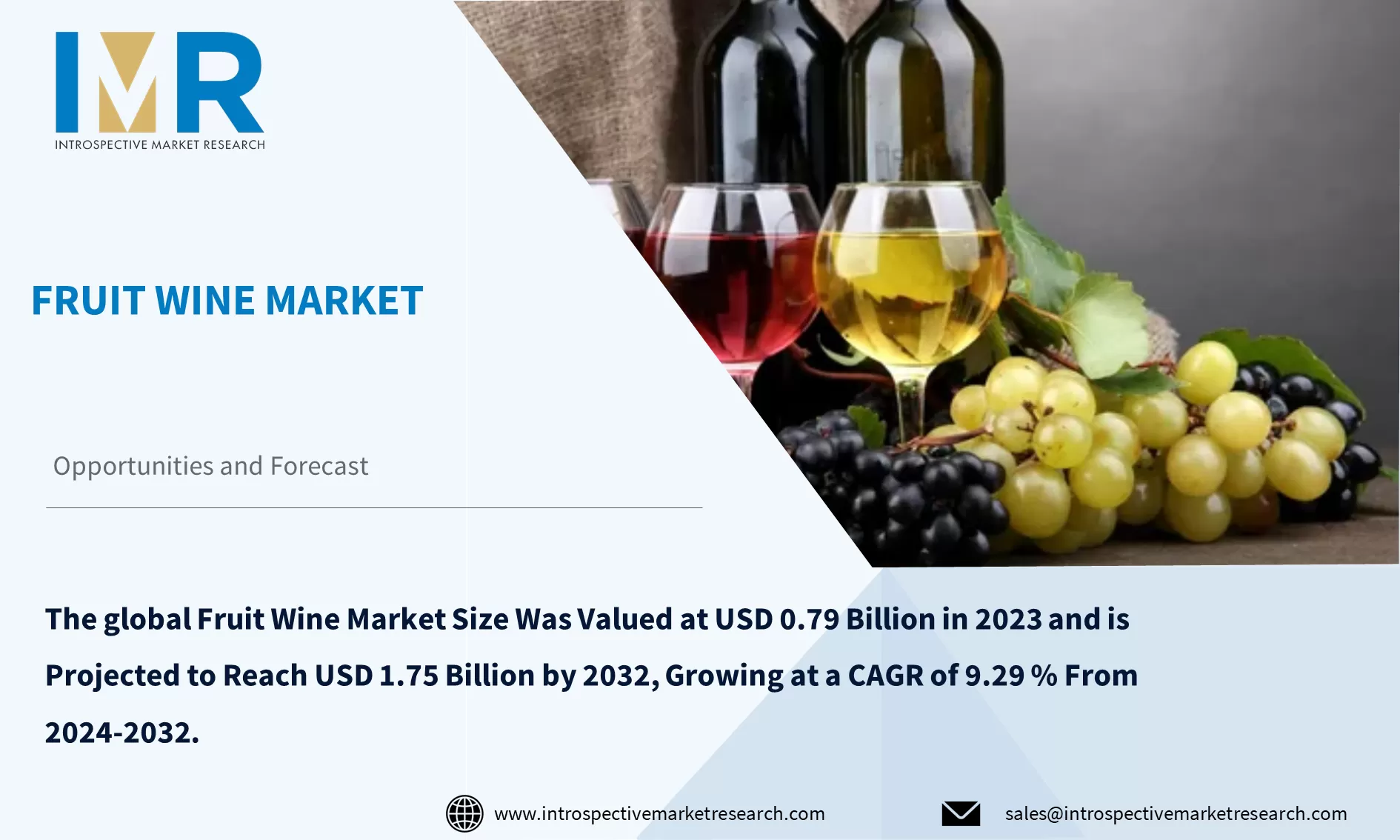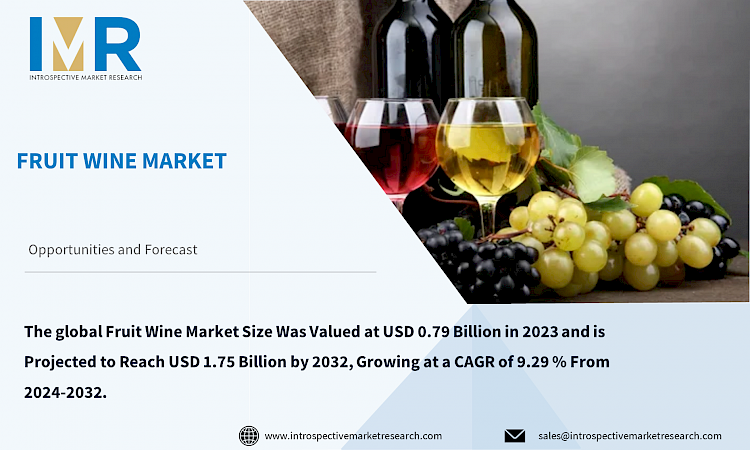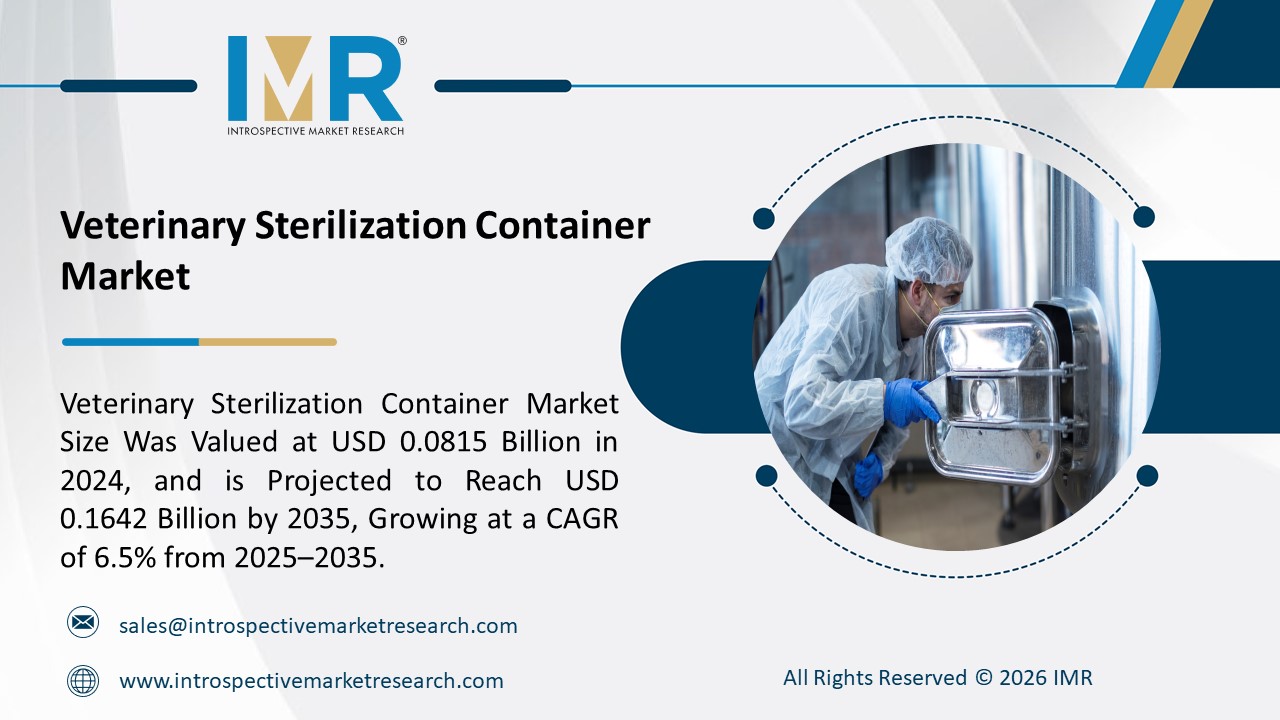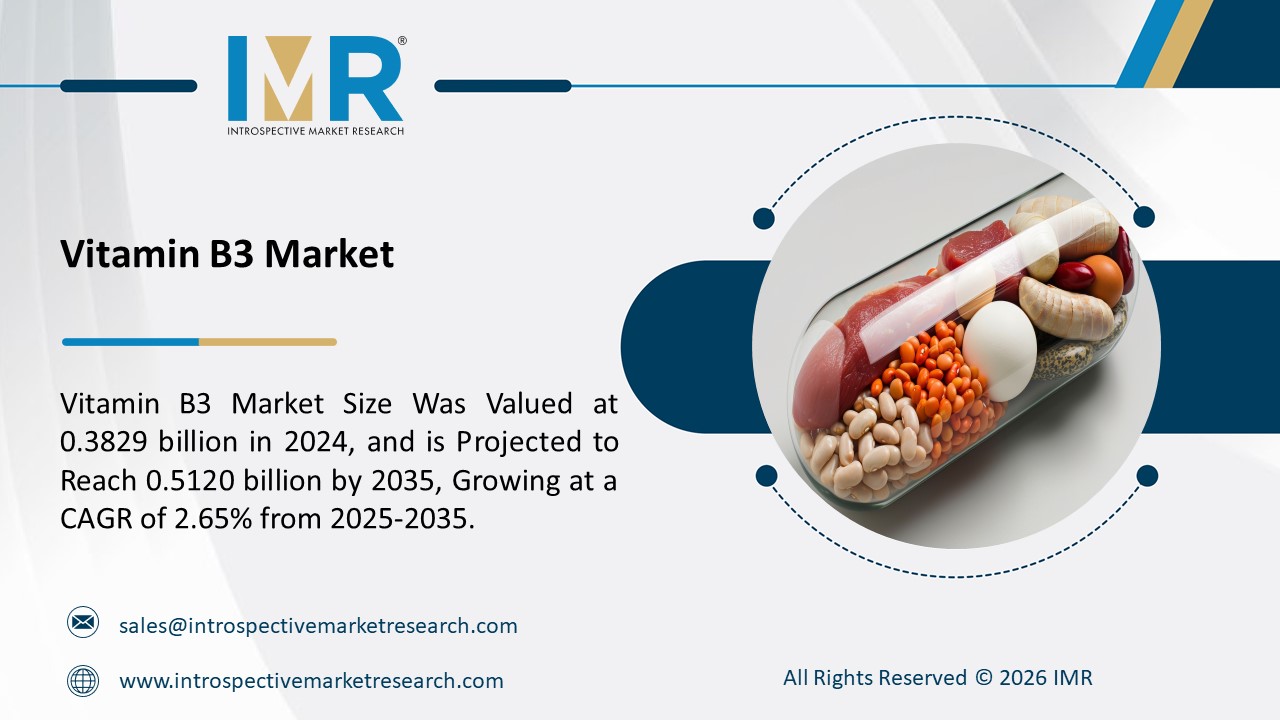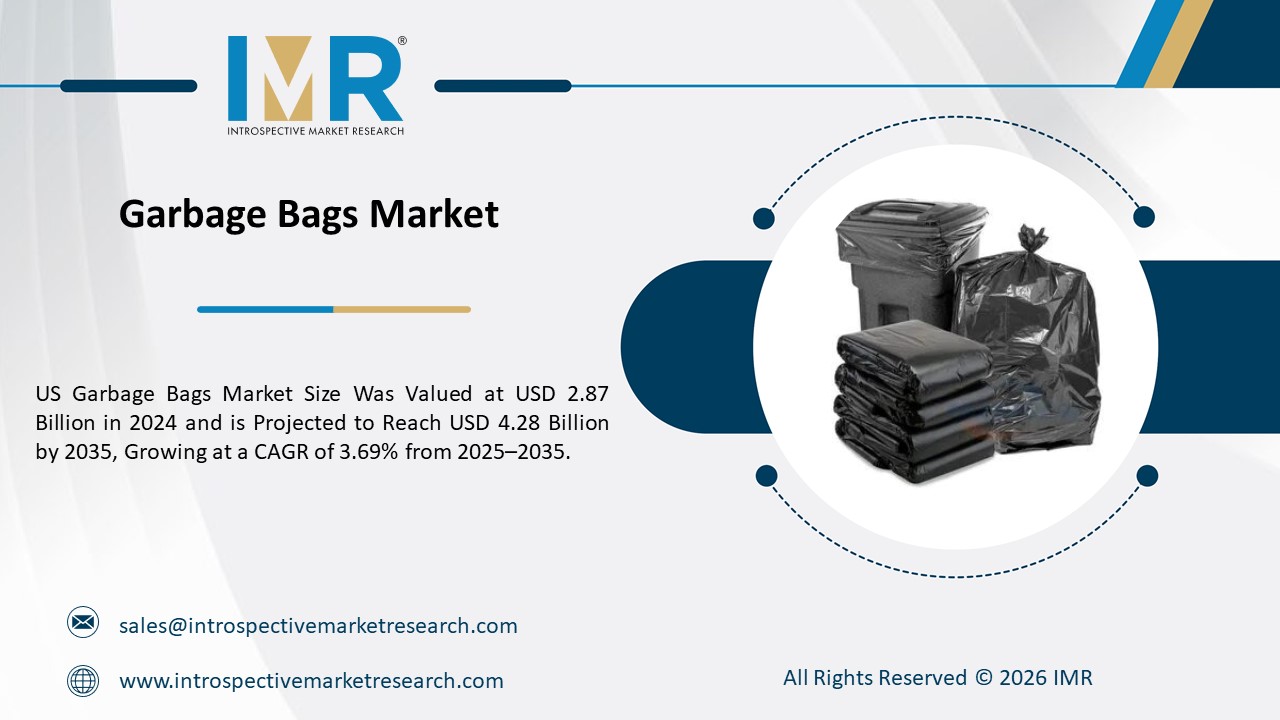Fruit Wine Market
According to a new report published by Introspective Market Research, titled, ?Fruit Wine Market by Product Type, Application Distribution Channel: Global Opportunity Analysis and Industry Forecast, 2024?2032,?
the global Fruit Wine Market Size Was Valued at USD 0.79 Billion in 2023 and is Projected to Reach USD 1.75 Billion by 2032, Growing at a CAGR of 9.29 % From 2024-2032.
Fruit wine is an alcoholic beverage made by fermenting the sugars found in various fruits and differs from traditional grape-based wines. Fruit wines are made through a fermentation process that converts fruit sugars into alcohol and includes a wide variety, including berries, stone fruits, and citrus. Fruit wines showcase selected fruits' unique flavors and aromas, offering a refreshing and often sweeter alternative to grape wines. Popular fruits for making wine are strawberries, peaches, and apples.
In a growing market, fruit wines are attracting consumers looking for new taste experiences and wineries around the world have made them represent local fruit varieties. The global fruit wine market offers many advantages, market trends, and growing demand. Its diverse selection of fruits allows producers to offer unique, innovative flavors that appeal to a wide range of consumers.
According to the global Fruit Wine Market is segmented into Product Type, Application and Distribution Channel, and region. By Product Type, the market is categorized into Fermented Fruit Wine, Distilled Fruit Wine, and Sparkling Fruit Wine. By Application, the market is categorized into Household and Commercial. By Distribution Channel, the market is categorized into Retail Stores, On-Premise, and Online Sales. By region, it is analyzed across North America (U.S.; Canada; Mexico), Eastern Europe (Bulgaria; The Czech Republic; Hungary; Poland; Romania; Rest of Eastern Europe), Western Europe (Germany; UK; France; Netherlands; Italy; Russia; Spain; Rest of Western Europe), Asia-Pacific (China; India; Japan; Southeast Asia, etc.), South America (Brazil; Argentina, etc.), Middle East & Africa (Saudi Arabia; South Africa, etc.).
Fruit wines are often considered a healthier alternative to traditional alcoholic beverages due to their natural fruit content, which is rich in antioxidants, vitamins, and other beneficial compounds. This insight resonates with consumers who are aware of their eating habits and are looking for products that offer both pleasure and potential health benefits. The health and wellness trend includes a broader desire for transparency in food and beverages. Fruit wines, especially those made with as few additives and preservatives as possible, are attractive to consumers looking for cleaner, more natural alternatives. The market will benefit from associating fruit wines with the positive attributes of fruit consumption, including potential cardiovascular benefits and antioxidant properties.
Flavor and blending innovations represent a significant opportunity for the fruit wine market, offering producers the ability to differentiate products and respond to changing consumer preferences. The ability to experiment with different fruits allows winemakers to create unique and distinctive flavor profiles that appeal to a wider audience. This innovation responds to the innovative taste experiences of today's consumers, generating interest and engagement in the fruit wine market. In the beverage industry, the demand for complex blends is growing rapidly, especially for fruit wines. Winemakers use innovative flavor combinations to serve discerning consumers looking for something different from traditional grape wines. This allows them to balance the sweetness, acidity, and aroma of different fruits, which contributes to the growth and dynamism of the fruit wine market.
Global Fruit Wine Market, Segmentation
The Fruit Wine market is segmented based on Product Type, Application Distribution Channel, and region.
Product Type:
The Product Type segment is further classified into Fermented Fruit Wine, Distilled Fruit Wine, and Sparkling Fruit Wine. Among these, the Fermented Fruit Wine sub-segment accounted for the highest market share in 2023. Fermented fruit wines use natural fermentation processes, enhancing the flavors of different fruits and creating a versatile flavor profile that resonates with many consumers. The popularity of the fermented fruit wine segment is based on its ability to serve both casual and discerning consumers, offering a versatile and enjoyable drinking experience. Fermented fruit wines are growing in popularity due to the growing demand for authentic products that emphasize craftsmanship and natural processes. Their versatility, combined with different cuisines and events, strengthens their market position. As consumers increasingly seek unique taste experiences, the fermented fruit wine segment stands out for its rich, layered flavors and cultural significance, placing it at the forefront of the evolving fruit wine landscape.
Application:
The application segment is further classified into Household and commercial. Among these, the commercial sub-segment is anticipated to show the fastest growth by 2032. The commercial segment has increased consumer demand for unique and exotic spirits and led to an increase in the popularity of fruit wines, especially in bars, restaurants, and hotels. The business sector benefits from economies of scale that enable higher production volumes and more efficient distribution channels. In addition, aggressive marketing and promotional activities by commercial sector manufacturers increase product visibility and consumer awareness. The rise of e-commerce platforms also plays a crucial role in increasing sales, as it provides a convenient way for business buyers to purchase fruit wines. A combination of consumer trends, efficient operations, and strategic marketing positions the commercial segment as a dominant force in the fruit wine market.
Region:
The Fruit Wine market in Asia-Pacific is projected to show the fastest growth by 2032s. T The region has a rich agricultural heritage, a varied climate, and fertile lands that favor the cultivation of a wide variety of fruits. This abundance of fruit varieties creates a strong basis for the production of fruit wines, attracting both local and international consumers. Changing consumer preferences for healthier and more versatile beverages has increased the demand for fruit wines. As consumers become more health conscious, they are increasingly drawn to natural and less processed beverages, making fruit wines an attractive choice due to their association with natural ingredients and flavors. Rising disposable incomes and a growing middle class in many Asian countries have boosted spending on premium and exotic food and drinks, including fruit wines. This growing purchasing power has created a lucrative market for fruit wine producers to capitalize on the demand for quality and innovative products.
Some of The Leading/Active Market Players Are-
- Teutonic Wine Company (United States)
- Nashoba Valley Winery (United States)
- Bella Wine (Canada)
- Field Stone Fruit Wines (Canada)
- Lyme Bay Cider Co Ltd (United Kingdom)
- Eckes-Granini Group (Germany)
- Zhongbo Green Technology Co., Ltd (China)
- Ningxia Hong (China)
- Wildberry Beverages Pvt. Ltd. (India), and Other Active Players
Key Industry Developments
- In May 2024, Sogrape launched Solisto, the first modern Portuguese sparkling wine in the US, imported by Evaton, on May 15, 2024. Crafted by the team behind Silk & Spice, Solisto embodies Portugal?s sunny spirit and maritime charm. This new bubbly elevates any occasion with its luxurious, approachable appeal, enhancing Evaton?s award-winning portfolio.
- In March 2024, Island Grove Wine Company announced its product expansion into the Southeastern U.S. market. The launch includes their signature wines in eco-friendly kegs and cans, reflecting their commitment to sustainability. This innovative move offers customers a practical, environmentally friendly way to enjoy Island Grove wines.
Key Findings of the Study
- The global fruit wine market is projected to reach USD 1.75 billion by 2032, growing at a CAGR of 9.29% from 2024 to 2032, driven by consumer demand for unique taste experiences and healthier beverage options.
- Fermented fruit wine holds the highest market share due to its natural processes and versatile flavor profiles that resonate with a wide range of consumers.
- Asia-Pacific is expected to show the fastest growth, supported by diverse fruit production, a health-conscious consumer base, and rising disposable incomes.
- The commercial segment is anticipated to grow rapidly, fueled by increasing demand in bars, restaurants, and hotels, as well as effective marketing and distribution strategies.

